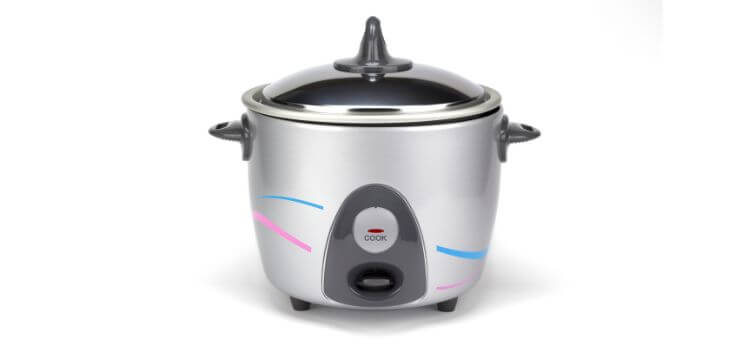As an Amazon Associate, I earn from qualifying purchases

In today’s fast-paced world, the kitchen is often a battleground where time and convenience are paramount. Enter the rice cooker: a marvel of modern culinary technology that has become a staple in homes worldwide. Originally designed to perfectly steam rice, this versatile appliance has evolved, proving itself capable of cooking a wide array of grains and legumes, including the humble lentil.
If you’ve ever wondered whether you can cook lentils in a rice cooker, the answer is a resounding yes. This article will explore the benefits, methods, and challenges of cooking lentils in a rice cooker, guiding you towards becoming a more efficient and versatile home chef.
Benefits of Cooking Lentils in a Rice Cooker
The rice cooker is celebrated for its simplicity and convenience. One of the significant benefits of using a rice cooker for lentils is the ease of use it offers. Unlike stovetop cooking, which requires constant monitoring to prevent overcooking or burning, a rice cooker automates the process. You simply set it and forget it, allowing you to focus on other culinary tasks or just relax.
Another advantage is time-saving. A rice cooker streamlines meal preparation by handling the cooking process independently. This automation not only frees up your time but also ensures consistent results. The uniform heat distribution of a rice cooker means your lentils will cook evenly, resulting in a perfect texture every time.
Additionally, using a rice cooker can enhance the nutritional profile of your meals. Lentils are a powerhouse of protein, fiber, and essential nutrients. By cooking them effortlessly in a rice cooker, you’re more likely to incorporate these healthy legumes into your diet regularly.
Step-by-Step Guide to Cooking Lentils in a Rice Cooker
Embarking on your lentil cooking journey with a rice cooker is straightforward. Here’s a detailed guide to help you achieve the best results:
- Preparation: Start by selecting your lentils. Whether you choose red, green, or brown lentils, give them a good rinse under cold water to remove any dust or impurities. Sort through them to ensure there are no small stones or debris.
- Cooking Process: Once rinsed, place the lentils in the rice cooker. The general rule of thumb is to use a water-to-lentil ratio of 2:1, though this can be adjusted based on your texture preference. For a softer consistency, add a bit more water.
- Cooking Times: Cooking times may vary depending on the type of lentils. Red lentils typically cook faster, around 15-20 minutes, while green and brown lentils might take 30 minutes or more. Check your rice cooker’s instructions for specific settings that might expedite the process.
- Tips for Best Results: To enhance flavor, consider adding spices, herbs, or aromatics to the water. Bay leaves, garlic, or a pinch of cumin can add depth to your lentils. A dash of salt can be added after cooking to prevent toughening the lentils during the process.
Potential Challenges and Solutions

While rice cookers are generally reliable, a few challenges may arise when cooking lentils. One potential issue is overcooking. Lentils can become mushy if left too long, especially if the water ratio isn’t correct. To avoid this, monitor the cooking time closely and adjust the water level as needed.
Sticking is another common problem. If you find your lentils sticking to the rice cooker’s base, try adding a teaspoon of olive oil or a splash of broth before cooking. This not only helps prevent sticking but also adds a layer of flavor.
Different lentil varieties require different cooking approaches. Red lentils, for example, cook much quicker and dissolve into a paste-like texture, making them ideal for soups. In contrast, green and brown lentils hold their shape better and are suitable for salads or side dishes. Adjusting your approach based on the lentil type will ensure the best outcome.
Conclusion
Cooking lentils in a rice cooker is a game-changer for anyone seeking convenience without compromising on quality. The efficiency and ease of this method make it an excellent choice for busy individuals or those new to cooking. By following the steps outlined above, you can achieve perfectly cooked lentils with minimal effort.
The advantages of using a rice cooker extend beyond mere convenience. It encourages the incorporation of healthy legumes into your diet, diversifying your meals with rich, plant-based proteins. With a bit of experimentation, you can enhance flavors and textures, making your lentil dishes both nutritious and delicious.
In summary, the rice cooker is a versatile tool that can simplify your cooking routine, and lentils are an ideal candidate for this method. By understanding the nuances of cooking lentils in a rice cooker, you can enjoy the benefits of nutritious, tasty meals with minimal fuss. So why not give it a try? Unlock the potential of your rice cooker and savor the ease of preparing lentils like never before.
FAQ
Can dal be cooked in a rice cooker?
Yes, dal can be cooked in a rice cooker. Simply rinse the dal, add it to the cooker with water in a 2:1 ratio, and set the cooker. You can enhance flavor by adding spices or aromatics. Ensure you monitor the cooking time to prevent overcooking.
Can you cook legumes in a rice cooker?
Absolutely, legumes can be cooked in a rice cooker. This method is convenient and requires minimal supervision. Just rinse the legumes, add an appropriate amount of water, and let the cooker do the work. Adjust settings based on legume type to achieve the desired texture.
Can we boil pulses in a rice cooker?
Yes, boiling pulses in a rice cooker is efficient and straightforward. After rinsing, add the pulses with sufficient water and select the appropriate setting. This method frees up time and ensures even cooking, making it ideal for busy kitchens or those new to cooking pulses.
As an Amazon Associate, I earn from qualifying purchases